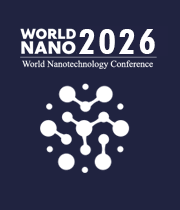Energy and Environment
Nanotechnology is the development of molecular-scale functional systems. Nanotechnology is being used in a variety of ways to improve the environment and produce more efficient and cost-effective energy, including reducing pollution during the manufacturing of materials, producing solar cells at a competitive cost, cleaning volatile organic compounds (VOCs) from the air cleaning up organic chemicals polluting groundwater. Nanomaterials and manufacturing methods have found their way into a wide range of applications. They have found use in solar cells, fuel cells, secondary batteries, supercapacitors, air and water purification, and the elimination of indoor and outdoor air pollutants. Clean energy and environmental applications frequently necessitate the creation of new nanomaterials capable of providing the shortest reaction paths thereby improving reaction kinetics. Understanding nanoparticles' physicochemical, structural, microstructural, and surface properties is crucial for achieving the needed efficiency, cycle life, and sustainability in a variety of technological applications.
- Novel Generation in Energy storage
- Nonnuclear Materials
- Oil & Gas
- Nano-energy
- Nano Solar Cells
- Nanofuels
- Nano Batteries
- Nano fibers

Harry Ruda
University of Toronto, Canada
Raman Singh
Monash University, Australia
Paulo Cesar De Morais
Catholic University of Brasilia, Brazil
Xiao Hong Nancy Xu
Old Dominion University, United States
S V A R Sastry
Harcourt Butler Technical University, India
Vinayak Adimule
Angadi Institute of Technology and Management, India



Title : Harnessing the unique properties of engineered nanostructures for sensing
Harry Ruda, University of Toronto, Canada
Title : Circumventing challenges in developing CVD graphene on steels for extraordinary and durable corrosion resistance
Raman Singh, Monash University, Australia
Title : 40,000 implants in humans and no failure: The impact of nanomedicine
Thomas J Webster, Hebei University of Technology, China
Title : Evaluating cytotoxicity of metal-doped tin oxide nanoparticles
Paulo Cesar De Morais, Catholic University of Brasilia, Brazil
Title : Lipid nanoparticles formulations: From bench scale to industrial scale
Mohammad A Obeid, RAK Medical and Health Sciences University, United Arab Emirates
Title : Cellulose-derived biochar modified with iron oxide and ZnO nanoparticles by a novel one-step pyrolytic method for removal of emerging contaminants from water
Rashad Al Gaashani, Hamad Bin Khalifa University, Qatar